How To Choose The Right Lymphedema Pump
10th Jan 2024
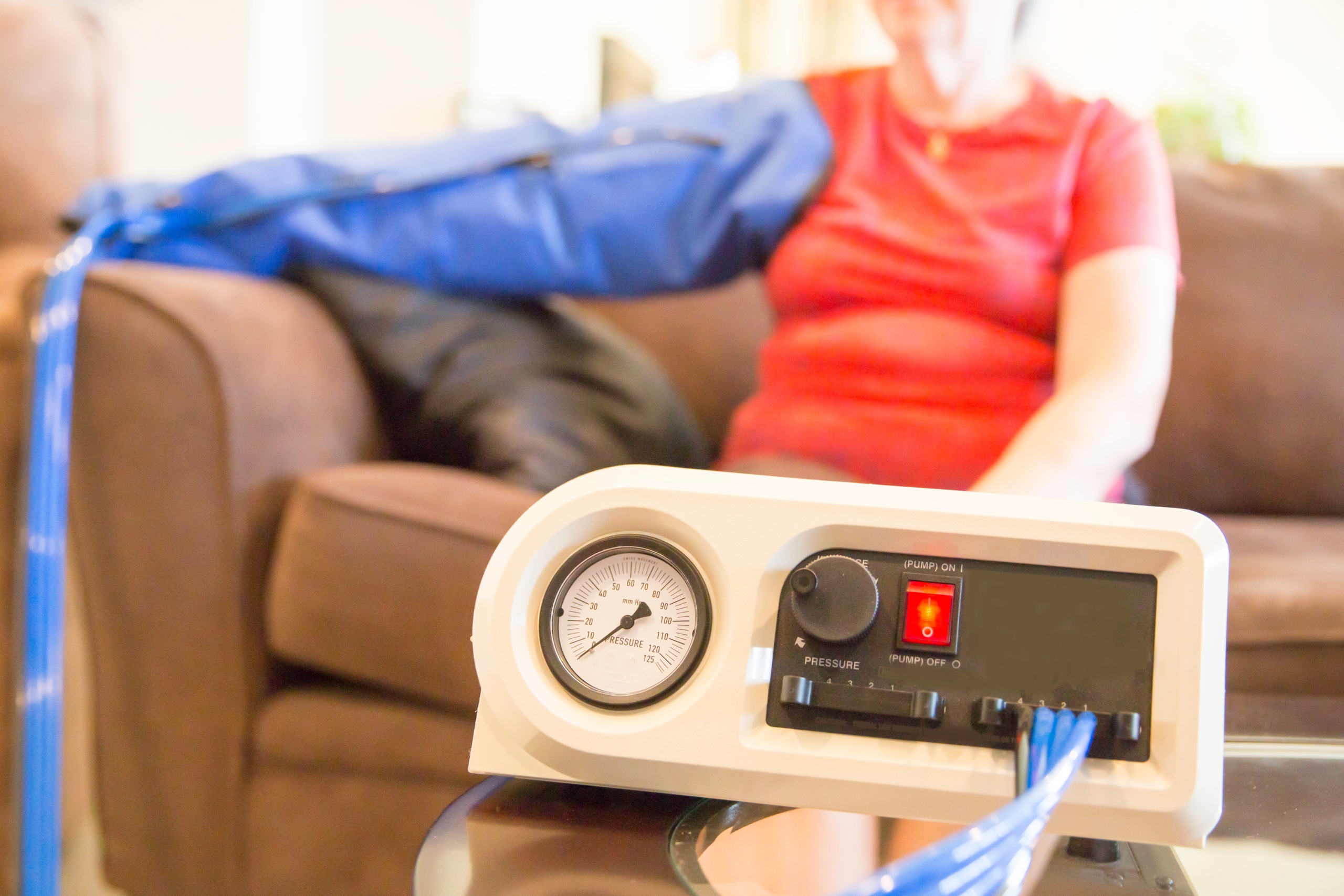
Lymphedema pumps remain a critical piece of equipment for effective lymphatic therapy, especially for individuals who are not very mobile. Despite this, it’s not always clear to patients which lymphedema pump, out of the many brands and models on the market, is the right one for them.
Lymphedema pumps come with different features - the key is selecting one that fits the needs of your lymphatic therapy situation. What are the primary differences between available lymphedema pumps, and how should you measure them against your preferences? Here’s our expert insight into how to choose the right lymphedema pump.
What is a Lymphedema Pump?
A lymphedema pump (or compression pump/pneumatic compression pump) is a medical device that enables automatic compression therapy for individuals with venous disease, edema, and other lymphatic system issues.
Compression and pressure can be applied by inserting an affected limb into a sleeve or garment with air chambers to help move fluid to body parts where the lymphatic system is damaged. Recycling fluid and blood is a normal part of therapy. Usually, it occurs naturally with physical exercise, but for those with limited or no mobility, a lymphedema pump can significantly benefit their therapeutic outlook.
Lymphedema pumps usually include:
- Automatic compression device
- Compression sleeves or garments
Compression sleeves and garments are typically sold separately from the compression device itself. Sleeves and garments often have a built-in air tube connected to the compression device before operation.
Lymphedema Pump Garments and Compression
Lymphedema pumps have two primary variables that differ from machine to machine: the type of garment/sleeve and the type of compression.
Lymphedema sleeves can either be purchased in a segmented or a non-segmented design. This is the number of air chambers on the garment, with non-segmented designs being one air chamber and segmented designs being separated into distinct chambers that can fill with air independently of the rest.
The type of sleeve and the type of pump directly impact what compression the device can accomplish. A non-segmented garment can apply continuous compression (always running) or intermittent compression (turns on and off automatically in programmed intervals). On the other hand, a segmented garment can apply both continuous and intermittent compression sequential and gradient compression.
Sequential compression is where the air chamber at the farthest extremity (farthest away from an individual's heart) will compress first, followed after some time by the second chamber, then again by the third chamber, and so on with equal pressure. This “milking” motion can effectively work fluid up and away from the extremity of your limb and back towards areas where blood and fluid are recycled.
Gradient compression similarly uses the air chambers independently but targets the distal end of the limb with the most pressure, and each subsequent chamber applies less compression.
Four Types of Lymphedema Pumps
There are four main types of lymphedema pumps to choose from:
1 - BioCompression SC-2004
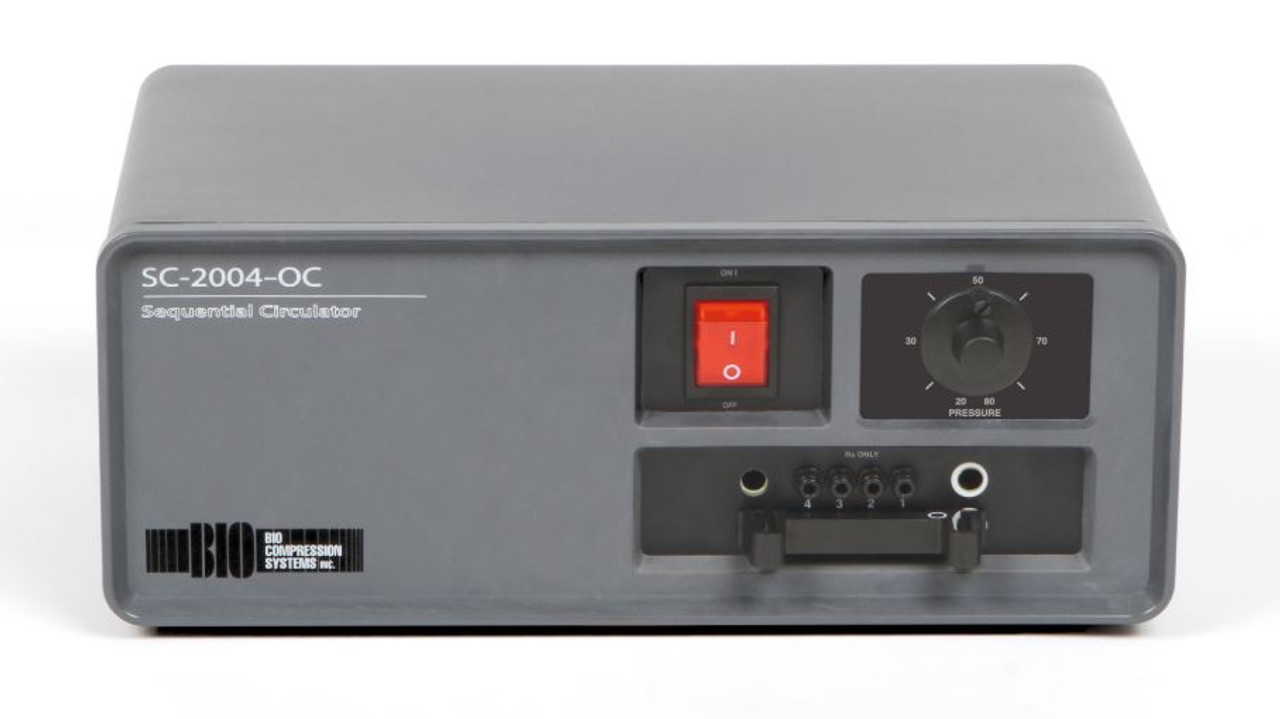 The BioCompression SC-2004 is a four-chamber lymphedema compression device and offers both sequential and gradient pressure.
The BioCompression SC-2004 is a four-chamber lymphedema compression device and offers both sequential and gradient pressure.
2 - BioCompression SC-2008
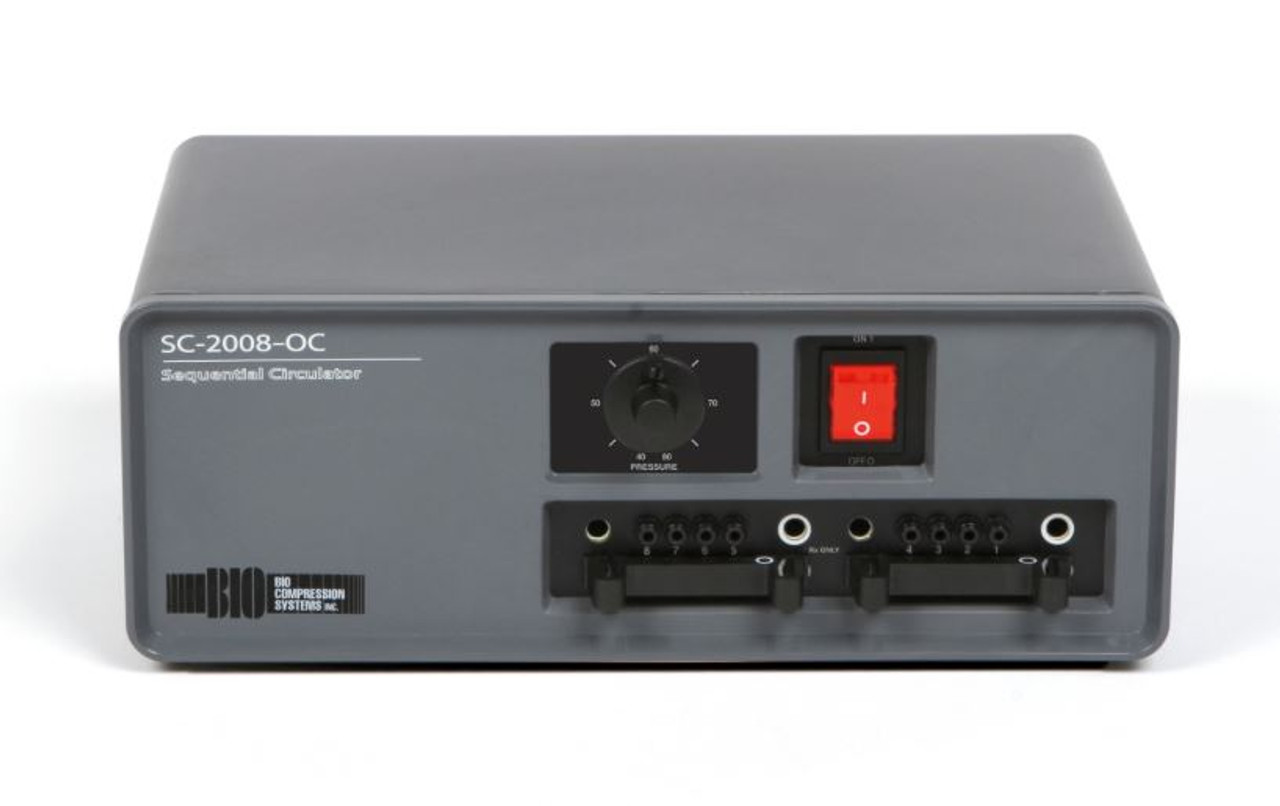
The BioCompression SC-2008 is an eight-chamber lymphedema compression device and offers sequential and gradient pressure.
3 - BioCompression SC-3004
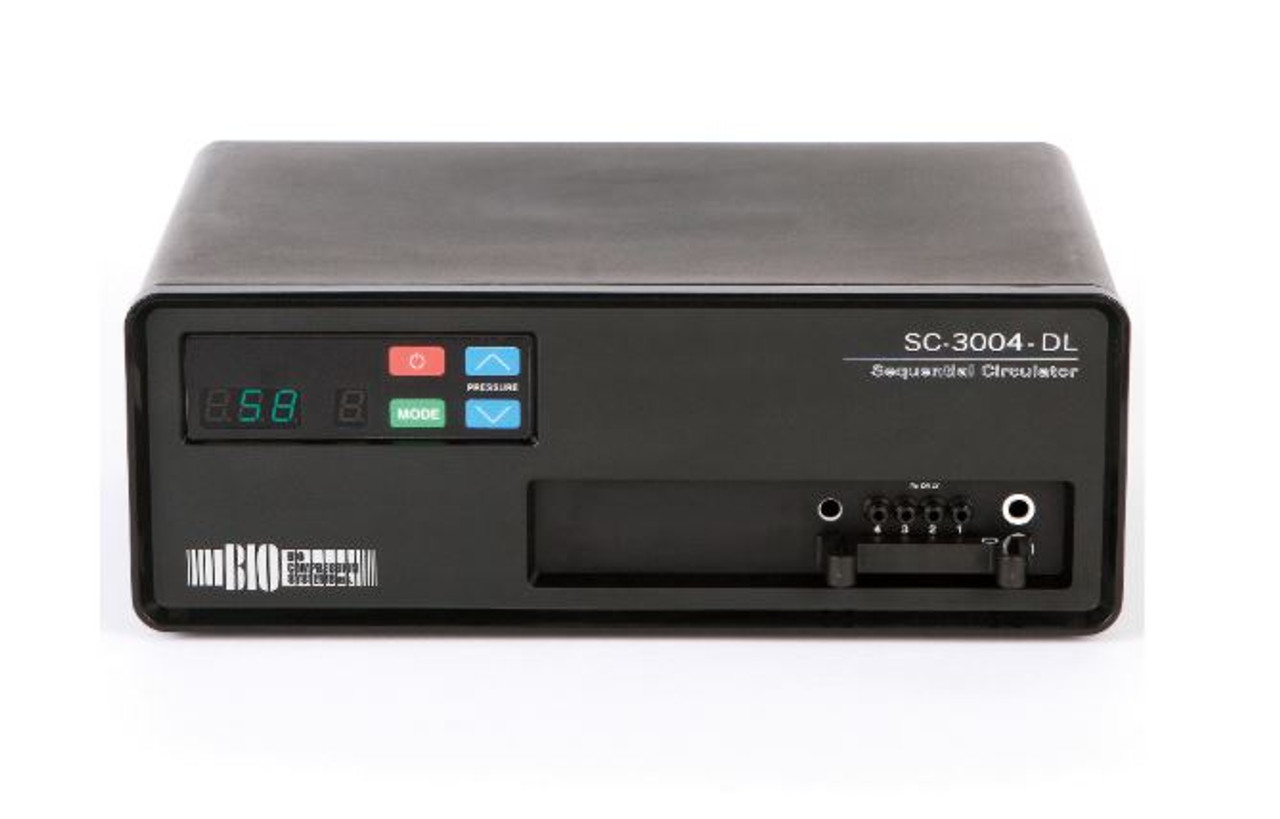
The BioCompression SC-3004 is a four-chamber lymphedema compression device like the SC-2004 model but can also calibrate pressure in individual chambers independent from the rest. This calibration accessory allows a customized therapy procedure critical to certain medical conditions.
4 - BioCompression SC-3008
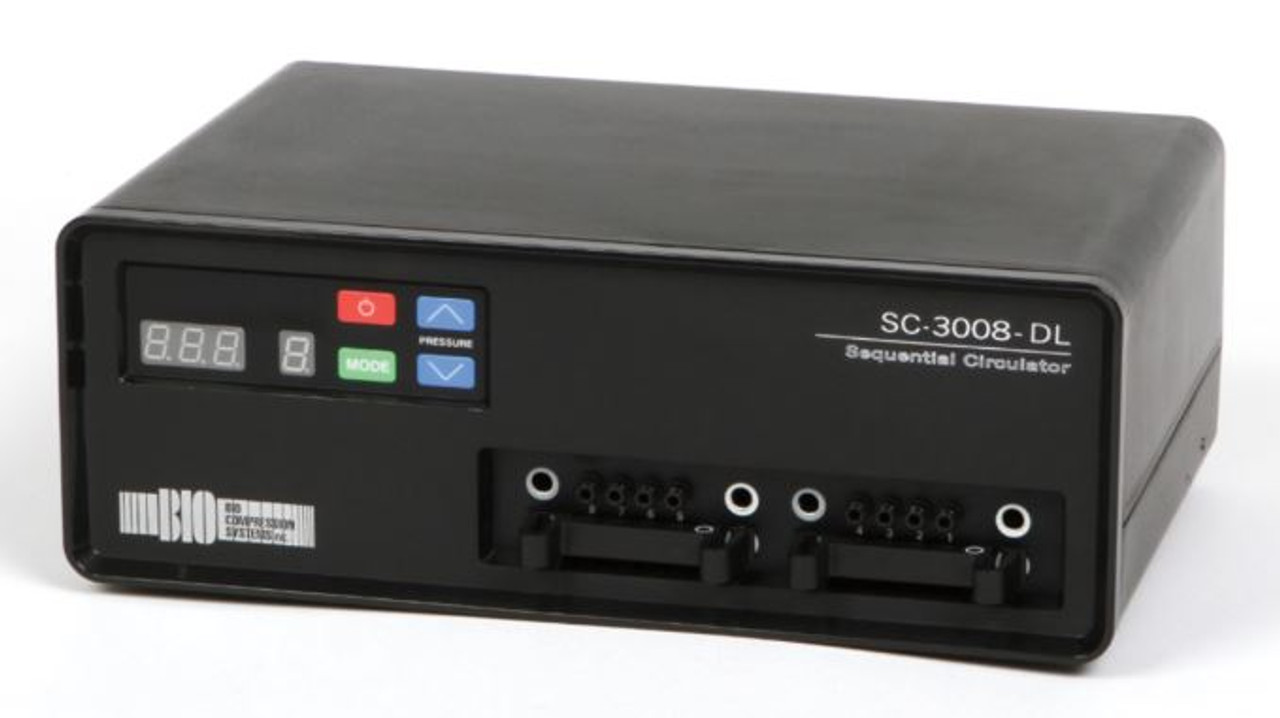
The BioCompression SC-3008 is an eight-chamber lymphedema compression device with calibrated, sequential, and gradient pressure.
Things to Consider
Types of sleeves and compression devices have advantages, so it’s essential to consider the best solution. For many people, considerations such as budget and extent of injury, for example, will significantly impact which lymphedema pump is the right one to choose.
An eight-chamber device is better for optimal compression therapy outcomes than a four-chamber. On the other hand, fewer chambers will result in a lower overall price, so if the budget is tight, then a four-chamber system will be best.
It’s also wise to consider your own body’s situation and the advice of your healthcare professional. Individuals with venous stasis ulcers, for example, may require calibrated chambers. At the same time, other health issues might not need calibration (a compression device could be suitable with sequential and gradient pressure alone). Calibrated devices are sometimes required, but an uncalibrated device will be more economical if it isn’t needed in your particular situation.
The Bottom Line
Lymphedema pumps are an excellent solution for less mobile individuals experiencing venous issues and lymphedema. Choosing the right pump matters: features and overall cost can vary substantially, and getting the needed care is critical.
We’re specialists in all types of compression devices and are confident we can match you with the perfect lymphedema pump. If you or someone you know could benefit from improved home therapy, don’t hesitate to contact the team of professionals at Medcom Group today!
Disclaimer
The Medcom Group, ltd. is not responsible for any complications arising from using this machine based on this article; patients should consult a healthcare professional for healthcare advice before performing compression therapy on themselves or another individual.
